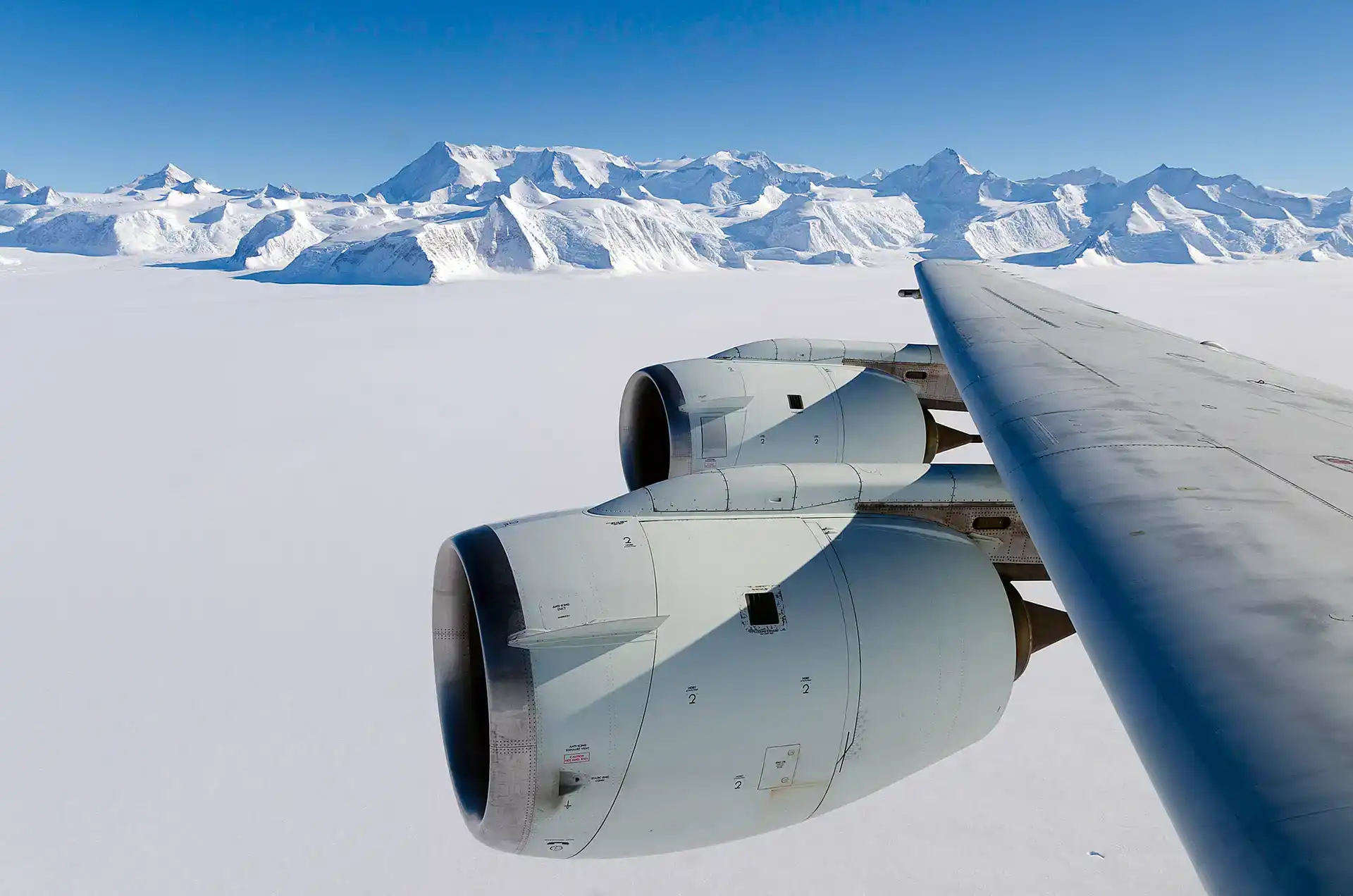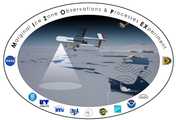
Overview
The ScanEagle is an uncrewed aircraft system (UAS) designed and manufactured by InSitu Inc. It has been used in a variety of research missions due to its long endurance and payload flexibility. The ScanEagle has a maximum endurance of up to 18 hours, a maximum rate of climb of 150m/min that reaches an altitude of 6 km, and a maximum payload weight of up to 11 pounds.
Online information
Related Campaigns & Instruments
Review the instruments operated on this platform for each of these field campaigns
Slide 1 of 1

Marginal Ice Zone Ocean and Ice Observations and Processes Experiment
2013
Southern Beaufort Sea, Prudhoe Bay, Alaska
view all deployment dates
1 Deployment
· 0 Data Products| 2013-07-09 | 2013-08-09 |
The Air-Deployed Microbuoy (ADMB) is an in situ buoy sensor that is deployed from uncrewed aerial systems (UAS). It consists of three thermistors that measure sea surface temperature and subsurface water temperature at 1 m and 2 m depths. The UAS retrieves the data as it flies over the buoy using the 900 MHz radio receiver within the ADMB. ADMB samples data at a rate of 1 Hz and has an operational lifetime of around 10 days, depending on the conditions.
Earth Science > Oceans > Ocean Temperature > Sea Surface Temperature
Earth Science > Oceans > Ocean Temperature > Water Temperature
Earth Science > Oceans > Ocean Temperature
The CU LIDAR Profilometer and Imaging System (CULPIS) is an airborne lidar mapping system developed at the University of Colorado at Boulder. It is designed to map land and sea ice surface topography and elevation from uncrewed aerial systems (UAS). It consists of a lidar system, an inertial measurement unit (IMU), a global positioning system (GPS), and digital cameras. The lidar system within CULPIS operates at the 905 nm wavelength and has a measurement rate of 400 Hz. It has a lidar footprint of 60 cm and an along-track spacing of 7.5 cm at a flight altitude of 200 m above ground level (AGL) and a flight speed of 30 meters per second.
Earth Science > Terrestrial Hydrosphere > Glaciers/ice Sheets > Glacier Topography/ice Sheet Topography
Earth Science > Land Surface > Topography > Terrain Elevation
Earth Science > Cryosphere > Glaciers/ice Sheets > Glacier Topography/ice Sheet Topography
Earth Science > Spectral/engineering > Lidar
Earth Science > Oceans > Sea Ice > Sea Ice Elevation
Earth Science > Land Surface > Topography
Earth Science > Cryosphere > Sea Ice > Sea Ice Elevation
ATOM is a thermal imager manufactured by LYNRED USA. It collects high-resolution thermal imagery across the 8-14 μm spectral range. It is small and compact, making it easy to integrate into ground vehicle and airborne platforms. ATOM has a pixel pitch of 17 μm and an array size of 1024x768 pixels. It takes about two seconds to record an image at a frame rate of 30 Hz.
Earth Science > Spectral/engineering > Infrared Wavelengths > Thermal Infrared
Earth Science > Spectral/engineering > Infrared Wavelengths > Infrared Imagery
The Bobcat 29MP Visible Camera is an airborne visible camera developed by Imperx, Inc. It is part of the IcePod instrument suite operated by Lamont-Doherty Earth Observatory (LDEO) of the Earth Institute at Columbia University. It captures visible imagery with a pixel resolution of 6576 x 4384, a swath width of 1.2 km, and a maximum frame rate of 20 Hz. These images can be used to determine ice concentration, topography, and ice melt.
Earth Science > Spectral/engineering > Visible Wavelengths > Visible Imagery
The Ball Experimental Sea Surface Temperature Radiometer (BESST) is an airborne pushbroom imaging radiometer developed by Ball Aerospace. It is a thermal infrared (8-12 μm) radiometer that measures sea surface temperature. BESST has a spatial resolution of 1 meter and a swath width of 200 meters at a flight altitude of 600 meters. It collects a total of 130 frames during a data frame, which takes about 53 seconds to complete. BESST was designed to be deployed on uncrewed aerial systems (UAS) and small aircraft.
Earth Science > Oceans > Ocean Temperature > Sea Surface Temperature
Earth Science > Spectral/engineering > Infrared Wavelengths > Thermal Infrared
Video cameras capture video recordings of various phenomena for research purposes. They are used on aircraft to provide continuous views of weather and terrain below the flight path. Video cameras are also employed to verify the aircraft's flight track. Additionally, they are deployed at field sites to monitor changes in vegetation, land cover, clouds, air quality, glaciers, and other Earth science phenomena.
Earth Science > Spectral/engineering > Visible Wavelengths > Visible Imagery
